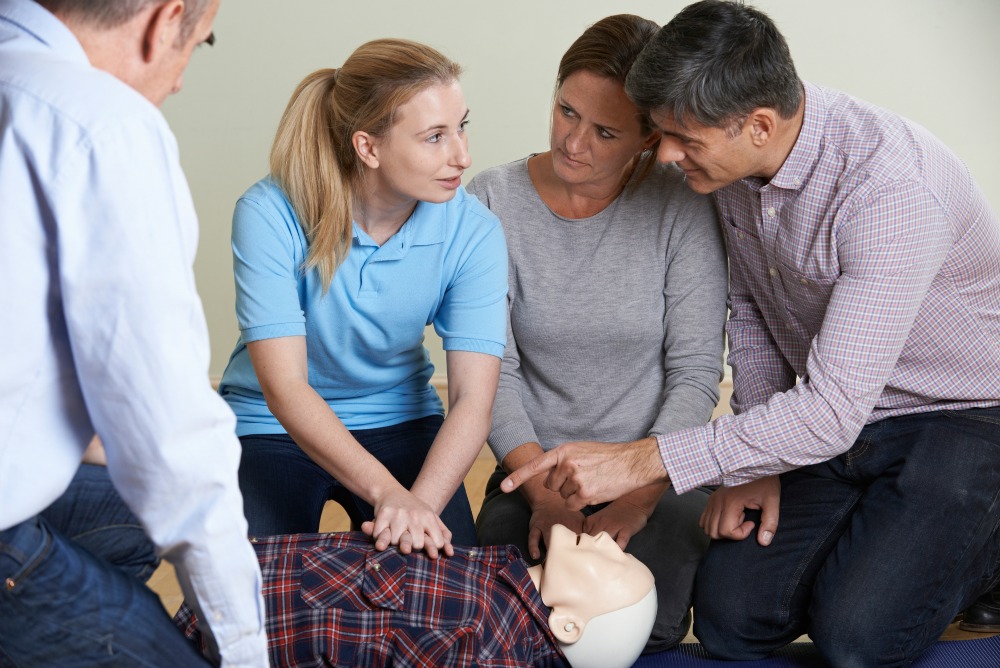
Why You Should Have A Workplace CPR Class For Your Employees
Are you ready for a shocking fact? According to the American Heart Association, 90 percent of people who suffer from cardiac arrest outside of a hospital die. Ninety percent. That means if someone has a heart attack in your office, he or she is at high risk of dying. Here’s another shocking fact, if someone near the person is trained in CPR and begins treatment immediately, that employee’s chances of survival have just been increased by two-to-three times. You need workplace CPR training for your employees.
What Is Cardiac Arrest?
A workplace CPR class can prevent death from cardiac arrest, but what is cardiac arrest? Cardiac arrest happens when the heart starts beating irregularly due to an electrical malfunction inside or outside of the body. The irregular heartbeat, which is called arrhythmia, stops blood flow to the brain and lungs. Arrhythmia also disrupts the blood flow to the rest of the body’s organs. Consequently, the brain begins to starve and die, and this is what causes death from cardiac arrest.
Time Is of the Essence
As you are probably aware, time is of the essence when brain function is compromised. The longer the brain is starved of oxygen, the more damage occurs. If you enroll your employees in workplace CPR training, you’ve just built up a network of people who can begin to administer this life-saving technique to any employee who goes into arrest. In fact, you’ve just ensured that they can save you, too. Seconds count, literally, when someone’s heart goes into arrhythmia, so get everyone trained in CPR.
How it Works
As you’ve figured out by now, the purpose of CPR is get the blood pumping again so the brain is not starved of oxygen. To do this, a person who has completed a workplace CPR class will begin to compress the chest gently in a rhythmic method that simulates the heart beating. This, in turn, circulates the blood, which gets the oxygen to the brain. The American Heart Association says the rhythm should be 100 to 120 compressions per minute and the Bee Gee’s “Stayin’ Alive” is the perfect beat to go by.
Breathing
Another life-saving skill learned in workplace CPR training is mouth-to-mouth resuscitation. During cardiac arrest, many people stop breathing, and mouth-to-mouth is required to get oxygen into the lungs, where it is then transferred into bloodstream to be pumped by the heart. Chest compressions and mouth-to-mouth work in tandem to simulate the body’s normal breathing and circulation process, which helps sustain life until emergency medical personnel arrive on the scene to take over.
A workplace CPR class for some or all of your employees will help prepare them in the event of an emergency. They will learn how to identify the difference between a heart attack and cardiac arrest, how to prepare the person for CPR, and how to administer the technique properly in an effort to sustain the person’s life until the paramedics arrive. Don’t let one of your employees become part of that 90-percent statistic. Get them trained to save each other’s lives today.
